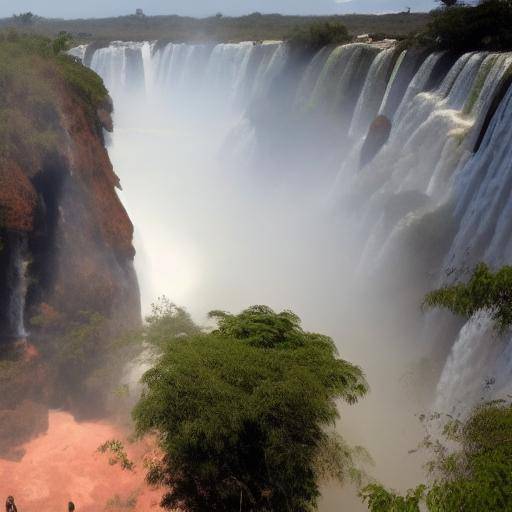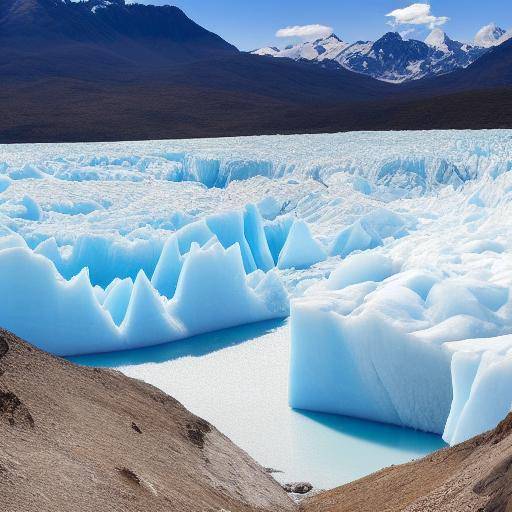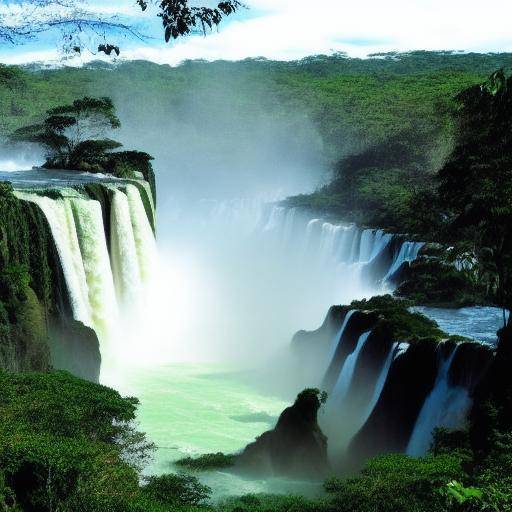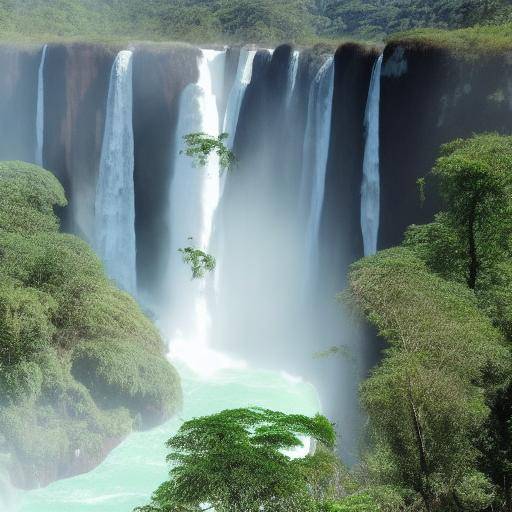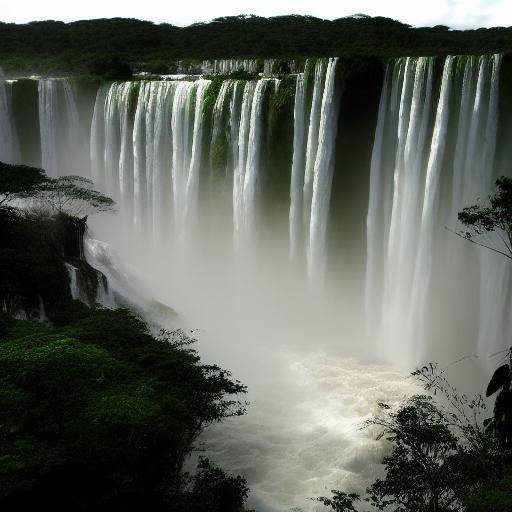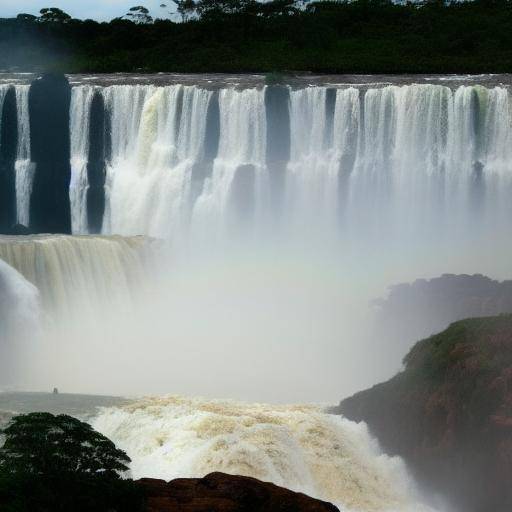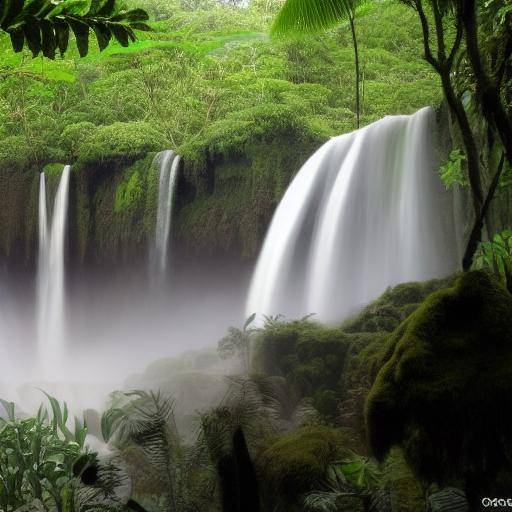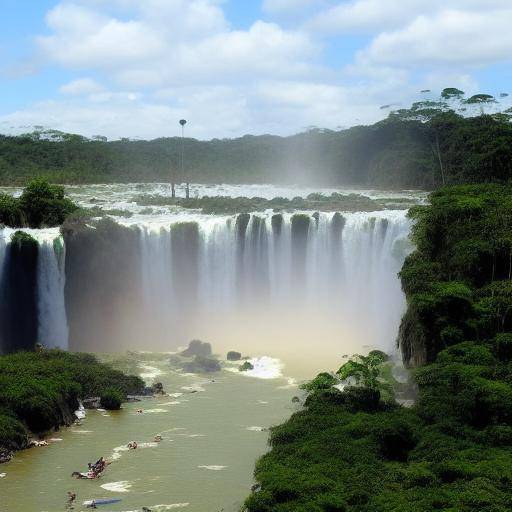
The Iguazú National Park, located in the province of Misiones in Argentina, is home to the impressive Iguazú Falls, one of the most amazing natural wonders in the world. In this article, we will immerse ourselves in the majesty of the cataracts, explore the rich history and unique biodiversity of the region, and we will discover why this natural wonder is a must for nature and adventure lovers.
Introduction
The Iguazú Falls, with their 275 jumps that extend over 2.7 kilometers, are an impressive show that leaves visitors breathless. In addition to visual beauty, the park also hosts exceptional biodiversity, with a variety of flora and fauna species. Throughout this article, we will enter the history and ecosystem of the Iguazú National Park, examine its cultural and ecological importance, and share practical advices to maximize this natural wonder.
History and Background
The Iguazú Falls have a fascinating history dating back to thousands of years, when the region was inhabited by indigenous civilizations. The Guaraní, in particular, considered the cataracts as a gift from the gods, and their cultural legacy remains present in the region until today. The arrival of European colonizers and the subsequent designation of the area as a national park have shaped the modern history of this spectacular place.
Visitors often wonder why the cataracts are called "Iguazú". The word comes from Guaraní and means "great water", a name that really captures the magnitude and greatness of this natural phenomenon. From its discovery by Alvar Núñez Cabeza de Vaca in the 16th century to the designation of the park as a World Heritage Site by UNESCO, the Iguazú Falls have exerted a profound influence on the culture and consciousness of the region.
Analysis in Deep
The biological diversity of Iguazú National Park is impressive. The lush vegetation and abundant wildlife make this park a paradise for nature lovers and biologists. The coexistence of different ecosystems within the park offers a unique opportunity to study the interaction between different species and the delicate balances that keep life in harmony.
The management and conservation of Iguazú National Park poses unique challenges. The balance between sustainable tourism, the protection of flora and fauna, and the needs of local communities requires careful planning and close collaboration between multiple stakeholders. In addition, the effects of climate change present additional challenges for the preservation of this important ecosystem.
Comprehensive review
The Iguazú Falls, being one of the biggest tourist attractions in Argentina, also generate significant economic opportunities. Responsible and sustainable tourism can provide economic benefits to local communities, in addition to fostering environmental awareness and the preservation of nature. However, it is crucial to find a balance that protects the natural environment while taking advantage of economic benefits in a responsible manner.
Comparative analysis
Compared to other natural wonders of the world, the Iguazú Falls stand out for their immense beauty and unique biodiversity. Contrast to the Perito Moreno Glacier in Patagonia, the cataracts offer an amazing display of strength and movement, creating a visual and sound spectacle that captivates visitors. In contrast to the Amazon rainforest, which shares features with the environment of the park, the cataracts offer a unique perspective of the interaction between the water and the earth, showing the majesty of natural power in a unique environment.
Practical Tips and Recommendations
To maximize the experience of Iguazú National Park, it is important to plan ahead. It is recommended to explore the different options of paths and viewpoints to get a complete perspective of cataracts and diverse wildlife. In addition, it is essential to respect conservation standards and ethical behaviour by visiting this protected natural environment.
- Pack light clothing and insect repellent to comfortably enjoy your visit.
- Consider hiring local guides for detailed information on the region's flora, fauna and history.
- Respect the signs and signs of the park rangers to ensure the safety and preservation of the area.
Industry Perspectives and Expert Reviews
Experts on conservation and sustainable tourism agree on the importance of preserving and protecting Iguazú Falls. Balanced management between tourism and biodiversity conservation is crucial to ensuring that this natural wonder lasts for future generations. Collaboration between governmental entities, non-profit organizations and the local community is essential to maintain the ecological and cultural integrity of the area.
Case Studies and Real Life Applications
Several research and conservation projects are being carried out in Iguazú National Park, from biodiversity studies to environmental education initiatives. These efforts help to better understand the unique ecosystem of the region and promote the conservation of indigenous flora and fauna. The results of these programs provide valuable information for the management and maintenance of the park.
Future Trends and Predictions
Current trends indicate growing interest in ecotourism and nature conservation, which could lead to a more sustainable approach to the exploration and management of Iguazú National Park. Technology is expected to play a crucial role in monitoring and preserving the area, allowing more effective management of natural resources and an enriching experience for visitors.
Conclusion
The Iguazú National Park and the imposing Iguazú Falls offer a unique experience that combines natural grandeur and exceptional biodiversity. From its fascinating history to its contemporary importance in conservation and sustainable tourism, this natural wonder continues to captivate visitors from around the world. When planning a visit to Iguazú National Park, travelers have the opportunity to witness the immensity and beauty of nature in their most majestic state.
Frequently asked questions
What is the best time to visit the Iguazú Falls?
The high season in the Iguazú Falls is usually from June to August, during the winter in the southern hemisphere. However, the rainy season, which runs from November to March, offers an impressive show with a greater flow of water. The choice depends on the preferences of each visitor, if you prefer to see the cataracts in their maximum splendour or enjoy a milder climate.
How long do you need to visit Iguazú National Park?
It is recommended to spend at least one full day to explore the park and enjoy all its trails, viewpoints and activities. However, some visitors choose to spend more time to do additional activities, such as boat rides or guided tours.
What measures are being taken for the conservation of the Iguazú Falls?
The management of the park implements active conservation measures, including the promotion of sustainable tourism practices, the preservation of biodiversity, and participation in scientific research to understand and protect the ecosystem of the area. In addition, environmental education programmes and community efforts have been implemented to involve the local population in the protection of the park.
Are there restrictions to enter Iguazú National Park?
As in other national parks, there are rules and regulations designed to protect the natural environment and ensure the safety of visitors. These include restrictions on plant collection, ethical behaviour towards wildlife, and the use of designated paths. It is important to respect these regulations to preserve the integrity of the park.
What are the main activities that can be carried out in Iguazú National Park?
In addition to enjoying the breathtaking views of the cataracts from the different viewpoints and trails, visitors can also participate in activities such as boat rides near the falls, environmental interpretation tours, bird-watching and jungle hiking. There are various options to satisfy the interests of visitors and provide an unforgettable experience in nature.
What is the cultural importance of the Iguazú Falls for local communities?
Cataracts have a profound cultural significance for local communities, which consider them a sacred place and a source of inspiration. The richness of the history and traditions of the region is intertwined with the majesty of the cataracts, creating a cultural legacy that is reflected in the legends, music and art of the area.
How can you contribute to the preservation of the Iguazú Falls?
Visitors can contribute to the preservation of cataracts by following the guidelines of the park, respecting the natural environment and participating in sustainable tourism initiatives that support the conservation of the area. In addition, supporting non-profit organizations dedicated to environmental protection and biodiversity can have a positive impact on the long-term preservation of cataracts and their environment.
With these answers to frequent questions, we hope to provide valuable information for those who wish to explore and understand the greatness of the Iguazú Falls and their importance as an unmatched natural wonder.
In short, the Iguazú National Park and the Iguazú Falls not only represent an impressive spectacle of nature, but also contain a rich history, exceptional biodiversity and unique challenges and opportunities in terms of conservation and sustainable tourism. When planning a visit to this natural wonder, visitors have the opportunity to marvel at the greatness of nature and appreciate the importance of preserving its splendor for future generations.
With a deeper understanding of the cataracts, their environment and their meaning, visitors can enjoy an enriching and meaningful experience while contributing to their conservation and protection. Visiting the Iguazú National Park and contemplating the Iguazú Falls is more than just a tourist ride; it is an opportunity to connect with the grandeur of nature and be part of its perpetual preservation.

